As a laptop enthusiast with a keen interest in data mining, I understand that finding the best laptop for data mining can be a daunting task. Data mining professionals require powerful hardware, capable of handling large datasets, complex algorithms, and visualization tools. A subpar laptop could severely hinder your productivity and efficiency in this rapidly evolving field.
When looking for the best laptop for data mining, there are a few critical factors to consider, such as processing power, memory capacity, and storage options. A high-performance CPU, such as the latest Intel Core i7 or AMD Ryzen 7, paired with at least 16GB of RAM, is essential for handling data-intensive tasks. Additionally, having a solid-state drive (SSD) is crucial for faster read/write speeds and improved overall system performance.
To find the ideal laptop for your data mining needs, I've thoroughly reviewed an extensive spreadsheet of recently released laptops, comparing specs and user-generated reviews, as well as professional analyses. I've narrowed down the top choices based on the unique requirements of data mining professionals and a wide range of price points. Whether you're a seasoned data scientist or just starting in the field, this laptop buying guide will help you make an informed decision and find the best laptop for your data mining projects.
Process your data with these processors
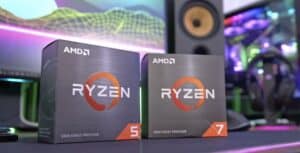
When it comes to data mining, a powerful processor is essential. However, with so many options on the market, it can be challenging to choose the right one. In this section, I will provide you with an overview of the laptop processor market and my recommendations for processors in each price bracket.
First, let's talk about the main differences between a high-end CPU and a low-end one. A high-end processor will have more cores and higher clock speeds, resulting in better performance. On the other hand, a low-end processor may not have as many cores or high clock speeds but is usually less expensive.
How much money you have to spend on a processor is also an essential consideration. If you're on a tight budget, you may have to sacrifice some performance to save money. However, if you're willing to spend more, you can get a processor with better performance.
For data mining, you'll need a fast single-core performance since most algorithms are not parallelized. Therefore, a high-frequency processor will be beneficial. To compare processors, I use Cinebench R23, which is one of the most popular benchmarks for this purpose.
If you're working with big data, you'll need a high-end processor with plenty of cores (8+). Now let's look at my recommendations for processors in each price bracket.
- Minimum: If you're on a tight budget, the i5-11320H is an excellent option. It has four cores and a base clock speed of 3.1 GHz. It scored 1537 on Cinebench R23 and is a good entry-level processor for data mining.
- Recommended: For those who want a better balance of price and performance, the AMD Ryzen 5 5600U is an excellent choice. It has six cores and a base clock speed of 2.3 GHz. It scored 1901 on Cinebench R23, making it a reliable processor for data mining.
- High-end: If you're willing to spend more for better performance, the i5-11500H is an excellent option. It has six cores and a base clock speed of 2.5 GHz. It scored 2134 on Cinebench R23 and is a powerful processor for data mining.
In conclusion, when choosing a processor for data mining, consider your budget, the processor's single-core performance, and the number of cores. With my recommendations in mind, you can find the right processor for your needs and budget.
Uncover the Best Graphics Card for Data Mining
When it comes to data mining, a high-end graphics card can significantly speed up the model training process. While a GPU is not strictly required for data mining, it can be a valuable asset to have. So, how do you decide which graphics card is right for your needs?
First, let's take a look at the current state of the market. Nvidia continues to dominate the laptop GPU market, although AMD's Radeon series is also gaining popularity. For data mining, we recommend going for a high-end graphics card like Nvidia's RTX series or AMD's Radeon VII.
It's worth noting that a GPU is not always faster than a CPU for data mining tasks. However, if you're working with large datasets, a GPU can accelerate the process significantly.
To determine whether a graphics card is fast enough for your needs, you can use benchmarking tools like 3DMark. This tool allows you to compare different GPUs and see how they perform in various scenarios.
To find out which GPUs are best for data mining, you can check online forums and communities. Many data mining experts share their experiences and recommendations online, making it easier to make an informed decision.
If you're on a budget, don't worry too much about the graphics card. You can still get by with a lower-end GPU like the GeForce GTX 1650. However, if you want to invest in a faster GPU, we recommend going for the GeForce RTX 3050 or even the high-end GeForce RTX 2060.
Lastly, if you're looking for a gaming laptop with long battery life, look for one with an Nvidia Optimus chipset. This technology allows the laptop to switch between the dedicated and integrated graphics chipsets depending on whether you're playing games or not.
Here's a table of recommended GPUs for data mining, grouped by price bracket:
| Price Range | Recommended GPU |
|---|---|
| Budget | GeForce GTX 1650 |
| Mid-Range | GeForce RTX 3050 |
| High-End | GeForce RTX 2060 |
In summary, if you're in the market for a laptop for data mining, a high-end graphics card can significantly speed up the process. Consider your budget and specific needs, and use benchmarking tools to make an informed decision.
Ramp up Your Data Mining with the Right RAM
Data mining is a memory-intensive task, and having enough RAM is crucial for smooth performance. In recent years, the RAM market has changed significantly, and the latest-gen CPUs from Intel and AMD support DDR4 and DDR5. However, DDR5 is still quite expensive and needs time to mature as a technology.
So, how much RAM do you need for data mining? It's not uncommon for data miners to use a few terabytes of RAM, but for most use cases, 32 GB is the minimum recommended amount of RAM. If you're on a budget, 32 GB should suffice, but if you're serious about data mining, 64 GB is the ideal amount of RAM.
When it comes to memory frequency, it's not as important as it used to be. DDR5 is still in its early stages, and most data miners don't need the best possible laptop for data mining. So, don't worry too much about getting DDR5 memory, and stick with DDR4.
If you're working with large datasets, you might need more than one memory module. Check if your laptop has additional memory slots so you can upgrade in the future.
Here's what you can expect at each price point:
| Price Range | RAM |
|---|---|
| Under $1,000 | 16 GB |
| $1,000 – $2,000 | 32 GB |
| Over $2,000 | 64 GB |
In summary, data mining requires a lot of memory, and having enough RAM is crucial for smooth performance. Stick with DDR4 and aim for at least 32 GB of RAM. If you're on a budget, 32 GB is enough, but 64 GB is ideal for most use cases.
Data Mining Laptops – Your FAQs Answered!
Q: Which laptop is best for data mining?
When it comes to data mining, you'll want a laptop that combines powerful processing capabilities, ample memory, and efficient graphics performance. Some top contenders in the market include the HP Victus, ASUS TUF F15 FX507ZM-ES74, Lenovo Legion 5 Pro, ASUS ROG Strix Scar, Lenovo Legion Pro 7i 16, and Dell XPS 17 9720. These laptops offer a range of specifications to suit different budget and performance needs.
What are the recommended laptop specifications for data mining?
For optimal performance in data mining, we recommend a laptop with at least a Medium level of specifications. This includes a processor such as the AMD Ryzen 5 5600U or i5-11500H, a minimum of 32 GB of memory, and a dedicated graphics card like the GeForce RTX 3050 or RTX 2060. These specifications ensure smooth data processing and analysis, allowing you to handle large datasets efficiently.
Can data mining be done on a laptop?
Absolutely! With the advancements in technology, laptops now offer powerful processors, ample memory, and dedicated graphics cards that can handle the demands of data mining. Whether you're a professional data scientist or a hobbyist, a well-equipped laptop can provide you with the necessary tools to perform data mining tasks efficiently.
What processor is best for data mining on a laptop?
When it comes to data mining, a processor with strong multi-core performance is essential. For optimal performance, we recommend a laptop with a processor like the AMD Ryzen 5 5600U or i5-11500H. These processors offer excellent processing power, allowing you to handle complex data mining tasks with ease.
How much RAM is needed for data mining on a laptop?
The amount of RAM you need for data mining depends on the size of the datasets you're working with. However, we recommend a minimum of 32 GB of memory to ensure smooth data processing and analysis. This will provide enough headroom to handle large datasets and perform complex calculations without experiencing performance bottlenecks.
Is a dedicated graphics card necessary for data mining on a laptop?
While a dedicated graphics card is not absolutely necessary for all data mining tasks, it can significantly enhance your performance when working with complex visualizations or using algorithms that utilize GPU acceleration. For optimal performance, we recommend a laptop with a dedicated graphics card like the GeForce RTX 3050 or RTX 2060.
What storage capacity is ideal for data mining on a laptop?
When it comes to storage capacity for data mining, it's crucial to strike a balance between speed and capacity. We recommend opting for a laptop with a solid-state drive (SSD) rather than a traditional hard drive (HDD). An SSD provides faster read and write speeds, which can significantly improve data processing times. Aim for a minimum storage capacity of 512 GB, although larger capacities are always beneficial, especially if you're working with extensive datasets.
Are gaming laptops suitable for data mining?
Gaming laptops can be an excellent choice for data mining due to their high-performance hardware components. Many gaming laptops offer powerful processors, ample memory, and dedicated graphics cards, making them well-suited for data mining tasks. However, keep in mind that gaming laptops might prioritize cooling and aesthetics over portability and battery life, so consider your specific needs before making a decision.
What software or tools are commonly used for data mining on a laptop?
There are several software and tools commonly used for data mining on a laptop. Some popular options include Python libraries like Scikit-learn, TensorFlow, and PyTorch, which provide a wide range of data mining and machine learning functionalities. Additionally, tools like RapidMiner, KNIME, and Weka offer graphical interfaces that simplify the data mining process. The specific software or tool you choose will depend on your requirements and familiarity with different programming languages and environments.
What are the minimum laptop requirements for data mining?
While it's best to aim for a laptop with at least Medium level specifications for data mining, you can still perform basic data mining tasks with more modest requirements. The minimum laptop requirements for data mining include a processor like the i5-11320H, 16 GB of memory, and a dedicated graphics card like the GeForce GTX 1650. While these specifications may not provide optimal performance for complex tasks, they can handle simpler data mining operations.
6 Best Laptops for Data Mining
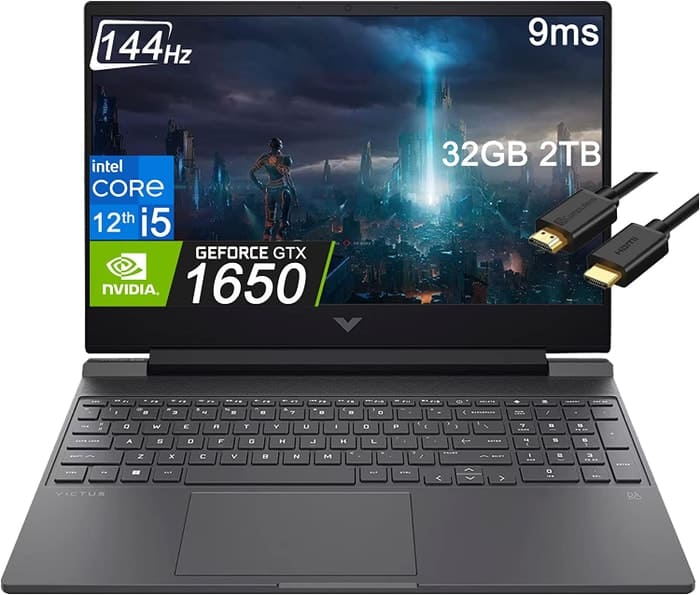
1.HP Victus 15
The HP Victus 15 strikes a balance between affordability and performance, making it a great budget gaming laptop option.- Excellent price
- Good gaming performance
- Can double as a work laptop
- Bad battery life
- Rather plain design
Summary
The HP Victus 15 offers respectable specs at an affordable price, delivering solid gaming performance and handling routine tasks with ease. While its design may be plain and its battery life subpar, it remains a remarkable option for gamers on a budget.
Alternatives
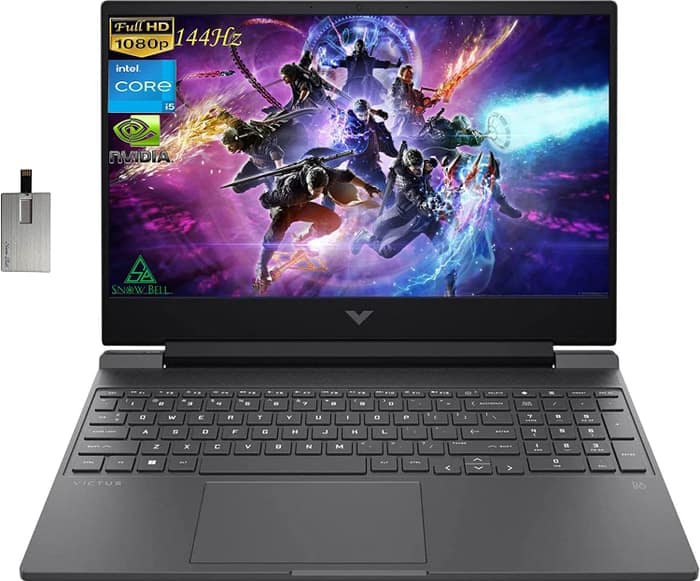
HP Victus
- Delivers smooth gameplay at 1080p.
- Fast SSD.
- No variable refresh rate to reduce screen tearing.
- Some performance loss on CPU under load.

2.ASUS TUF Dash F15
ASUS TUF Dash F15: A balanced and affordable laptop for data mining.- Lightweight and well-built design
- Good FHD 300Hz and QHD screen options
- More powerful than the previous generation
- Competitively priced
- Some quirks affecting everyday ergonomics
- Ports squeezed together on the left edge
- Careful consideration needed for the FHD 144Hz panel option
Summary
The ASUS TUF Dash F15 is a well-built and lightweight laptop that offers a good balance of performance and affordability. With its more powerful 2022 update, it is a suitable option for data mining tasks, especially when considering its competitive price point. However, users should be cautious about opting for the FHD 144Hz screen option and instead aim for the FHD 300Hz display.
Reviews
Alternatives
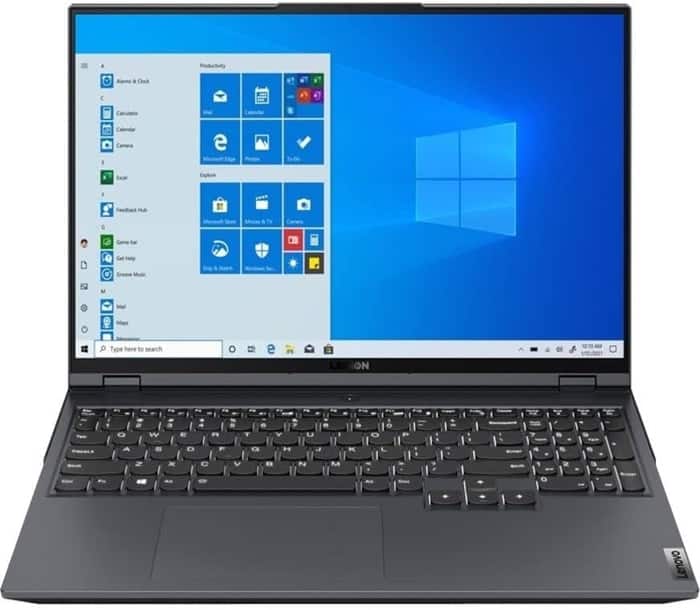
Lenovo Legion 5i Pro 16
- Stylish, sleek form factor
- Gorgeous display
- Webcam quality is poor
- No biometrics
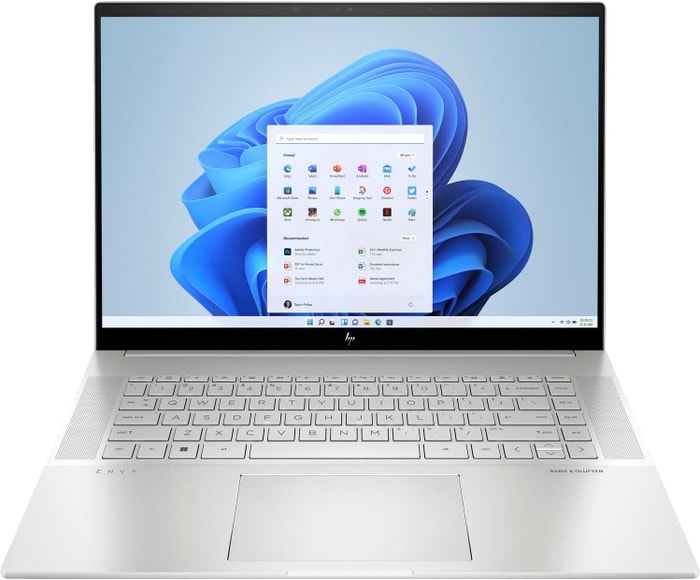 $1,800
$1,8003.HP Envy 16
HP Envy 16: A Powerful and Feature-packed Laptop for Data Mining- Plenty of CPU and GPU power
- New 120Hz screen refresh rate
- High-res webcam
- Sleek design
- Merely adequate base screen
- Optional OLED has fewer pixels than before
- Bulky and heavy
Summary
The HP Envy 16 is a top-of-the-line laptop that offers powerful CPU and GPU performance, a high refresh rate display, and a high-resolution webcam. It is a great choice for data mining tasks, although it is on the bulkier side.
Reviews
Alternatives
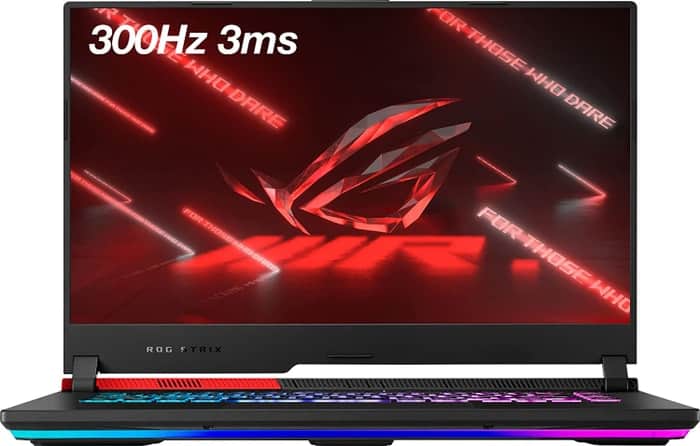
ASUS ROG Strix G15
- Powerful CPU and GPU performance
- Solid build quality
- Limited connectivity options
- Potential for coil whine in specific scenarios
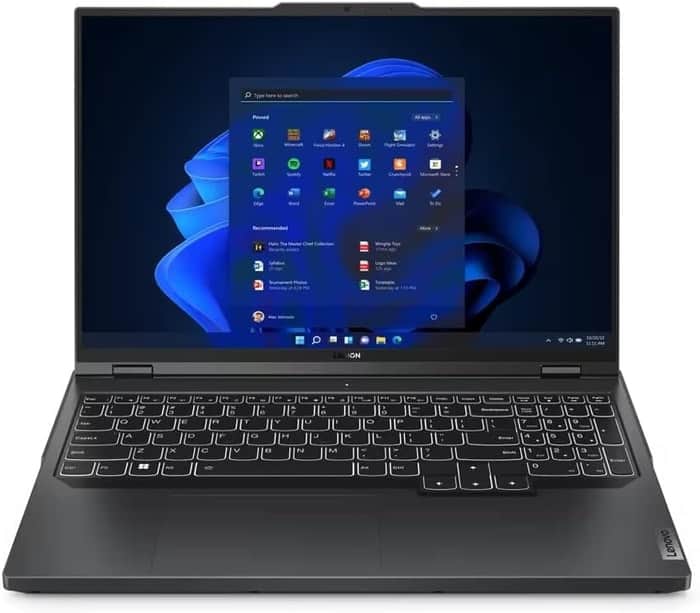
4.Lenovo Legion Pro 5
Lenovo Legion Pro 5 offers good value with its mid-tier performance and solid build quality, but falls short in battery life and speaker quality.- Good build quality and design
- Good screen and IO
- Competent CPU with three GPU options
- Competitively priced
- No Thunderbolt or biometrics
- Obvious hotspots while gaming
- Poor speakers
- So-so battery life
Summary
The Lenovo Legion Pro 5 is a competitively priced laptop with a good screen, inputs, and performance. While it offers a solid build quality and design, potential buyers should be aware of its hotspots under sustained loads, limited battery life, and lacking speaker quality.
Reviews
Alternatives
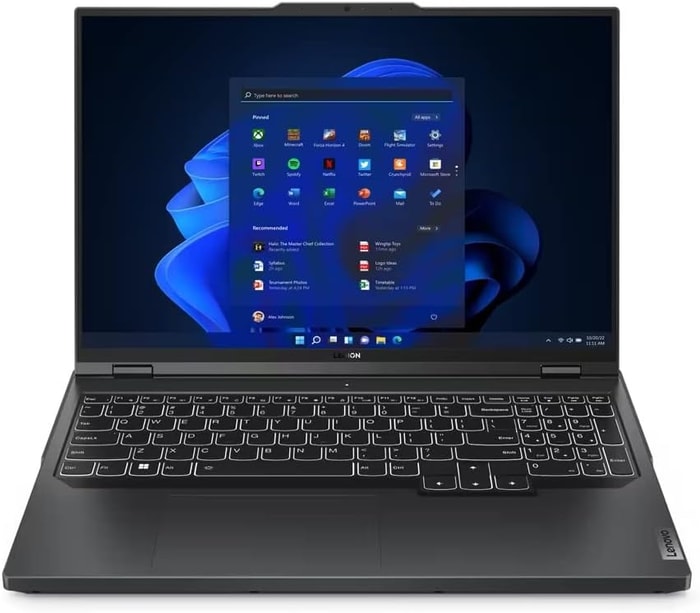 $2,840
$2,840Lenovo Legion Pro 5
- Strong performance for the price
- Quality build and port selection
- Display quality and battery life are just decent
- Bulky and heavy

5.Lenovo Legion Pro 7i 16
The Lenovo Legion Pro 7i offers powerful performance and a sleek design at a reasonable price, making it an attractive option for gamers.- Strong overall performance
- Big, bright, and fast display
- Per-key RGB lighting
- Some flex to keyboard deck
- Poor battery life
Summary
The Legion Pro 7i from Lenovo is a high-end gaming laptop that delivers impressive performance with its i9-13900HX processor and RTX 4090 graphics card. It offers great value for its price, with a sleek design and a display that is big, bright, and fast. However, it does have some drawbacks, such as a bit of flex in the keyboard deck and poor battery life.
Alternatives

HP Omen 17
- QHD display with 165 Hz
- Advanced Optimus
- Slightly below-average performance for a RTX 4080
- High noise level

6.Dell XPS 17 9720
Dell XPS 17 9720: A powerful laptop with an excellent 4K display, but graphics performance and cooling could be improved.- Excellent 4K display with AdobeRGB
- High-quality case
- Thunderbolt 4 PCIe 4.0
- Very high system performance
- Lower graphics performance than the predecessor
- Performance not completely stable under combined load
- Not Wi-Fi 6E compatible
- 720p webcam
Summary
The Dell XPS 17 9720 offers an excellent 4K display with AdobeRGB and a high-quality case. It boasts high system performance and comes with Thunderbolt 4 and PCIe 4.0 support. However, the graphics performance is lower than its predecessor and the cooling is slightly weak overall.
Reviews
Alternatives
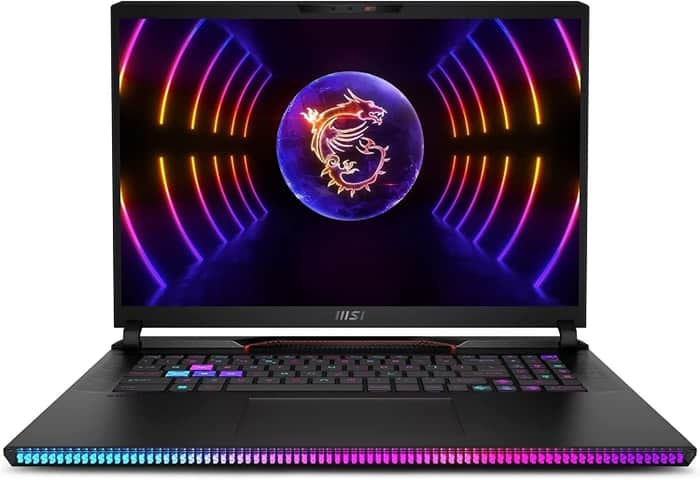
MSI Raider GE78 HX 13VI-079US
- Comfortable keyboard
- Solid gaming performance
- Removing the base to upgrade is difficult
- Fans run quite loud
Table of the Best Laptops for Data Mining
| Laptop | Price (approx) |
| HP Victus 15 | $880 |
| ASUS TUF Dash F15 | $1,160 |
| HP Envy 16 | $1,800 |
| Lenovo Legion Pro 5 | $2,630 |
| Lenovo Legion Pro 7i 16 | $3,390 |
| Dell XPS 17 9720 | $5,600 |





